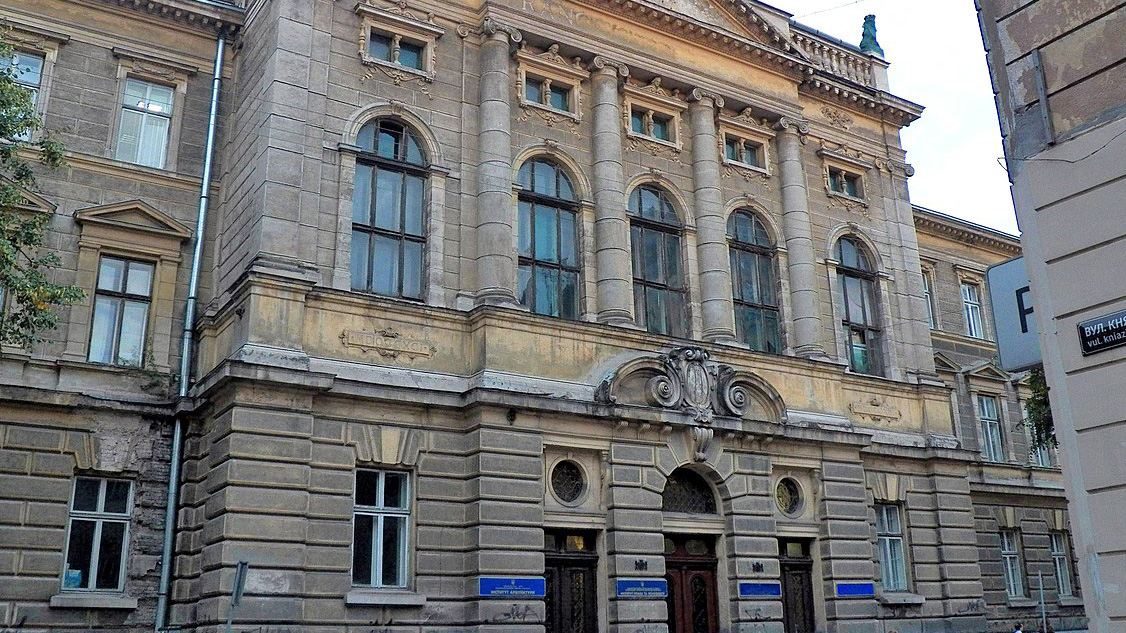The 19th academic building of Lviv Polytechnic is located at 1/3 Knyazya Romana Street, where students of the Institute of Law, Psychology and Innovative Education study. You can also meet tourists in the classrooms, as it is a cultural landmark that is still preserved and functioning. What is the interest of this building, what is its history, and who was tried there?
The former building of the Regional Court was the Palace of Justice. It is a monumental building in the central part of the city, crowned with a balustrade pediment and an attic sculpture group. The northern lobby is decorated with an allegorical sculpture symbolising justice. The second-floor hall is decorated with stucco décor and paintings by artists of the Jan Matejko School. The style of the building is historicism with the use of Neo-Renaissance and Neo-Baroque forms. The main façade faces Kniazia Romana Street and the side façade faces Halytska Square. Today it is academic building №19 of Lviv Polytechnic National University.
The building’s legendary history dates back to 1891. Back then, a palace for the Supreme Court of Galicia was built according to the designs of Polish architect Franciszek Skowron.
At one time, many high-profile trials took place in the Palace of Justice. Before the palace was built, there was an old Carmelite monastery on its site, which was used as a prison until 1889. According to legend, the conditions of detention there were considered to be the worst of all Lviv prisons of that time. It was in that prison that the Ukrainian writer Ivan Franko served his sentence. A memorial plaque on the façade testifies to this period. Students’ attention is often drawn to the assembly hall, which has recently been restored and is used for lectures and celebrations. In this hall Franko’s trial was held.
This three-storey building is still preserved in its original form. Once you enter the building, you will be greeted in the lobby by two stone sculptures of noble lions, which symbolised the protection of law and the laws of the judiciary in Galicia. They were created by Antoni Popiel, the author of the monument to Adam Mickiewicz in Lviv. The interior of the building is also decorated with another of his works – a statue of Justice. The building is a part of Lviv’s past and has a great architectural value and a fascinating history from antiquity to the present.
